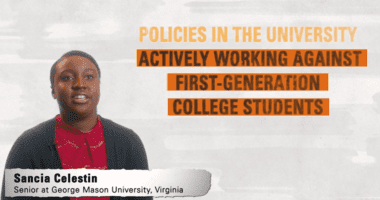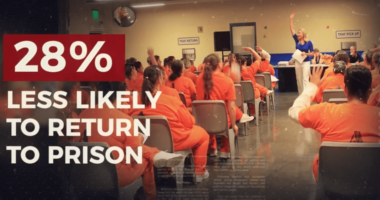Are Institutions Improving Overall Grad Rates But Leaving Black Students Behind? A Q&A With Andrew Nichols
Today, we released a new analysis, looking at a decade of graduation rates among African Americans at four-year, public institutions that improved overall student success during the past decade. The report — titled Rising Tide II: Do Black Students Benefit as Grad Rates Increase? — shows that while 70 percent of those institutions improved graduation rates for black students, the gains weren’t large or fast enough to close gaps between black and white students. In fact, in many cases, these gaps widened. I spoke with Andrew H. Nichols, one of the authors of the report, to learn more.
NHG: What is this Rising Tide report about?
AHN: This paper picks up where our last report — Rising Tide: Do College Grad Rate Gains Benefit All Students? — left off. In that report, we looked at the 255 public colleges and universities that improved their six-year, overall graduation rates from 2003-2013 and asked how well these schools are doing at graduating traditionally underrepresented minority students. We found that graduation rates for Latino and Native students increased at a faster rate (7.4 and 6.4 percentage points, respectively) than those for white students (5.7 percentage points), but the improvement among African American students lagged behind all of these student groups (4.4 percentage points).
So in Rising Tide II, we take a deeper look at the data for black students and answer important questions such as:
- At institutions that are improving overall graduation rates, are black students also making gains?
- Which schools are leading efforts to both raise graduation rates for black students and close long-standing completion gaps? And, conversely, which schools are failing to meet these goals?
- What lessons can be learned from institutions that are improving graduation rates and closing gaps?
NHG: So what did you find?
AHN: Our data show that almost 70 percent of the schools we studied increased graduation rates for black students from 2003-2013. However, those gains lagged behind those of white students, so more than half of institutions (53 percent) failed to narrow the completion gap between black and white students.
Worse still, almost a third of the schools (73 schools) saw graduation rates for black students either decrease or stay the same. And an alarming number of institutions, 39, experienced both declining graduation rates for black students along with widening gaps.
Fortunately, our data was not all doom and gloom. Fifty-two institutions that raised overall grad rates stood out for also substantially improving black student success. These institutions increased the graduation rate for black students by at least 9 percentage points, which is twice the average increase for all institutions in our sample. They also reduced the graduation rate gap.
These institutions prove, beyond a shadow of a doubt, that what institutions do — or don’t do — matters a great deal. And most important, they provide real-life examples of what other institutions can do.
NHG: What can and should institutional leaders do?
AHN: Institutional leaders must first acknowledge that what they do can improve student success. Far too often, we hear leaders excuse their low grad rates by pointing out that the students they serve are often academically unprepared and experience various challenges. While this is true, we know that institutions are able to overcome these challenges when they make equitable student success a priority that rivals that of all other institutional priorities. Once leaders adopt this mindset, they should start with an examination of their data. In our practice guide, Learning From High-Performing and Fast-Gaining Institutions, we highlight 10 analyses that leaders can start with. These will inform the decisions they need to make around academic advising, tutoring, curricula, financial aid, and much more. Leaders can also learn from what has been effective at other institutions. In Rising Tide II, we profile two such schools. The Ohio State University and Texas Tech University show that real progress can happen when leaders create a culture that values equity and success for all students.











